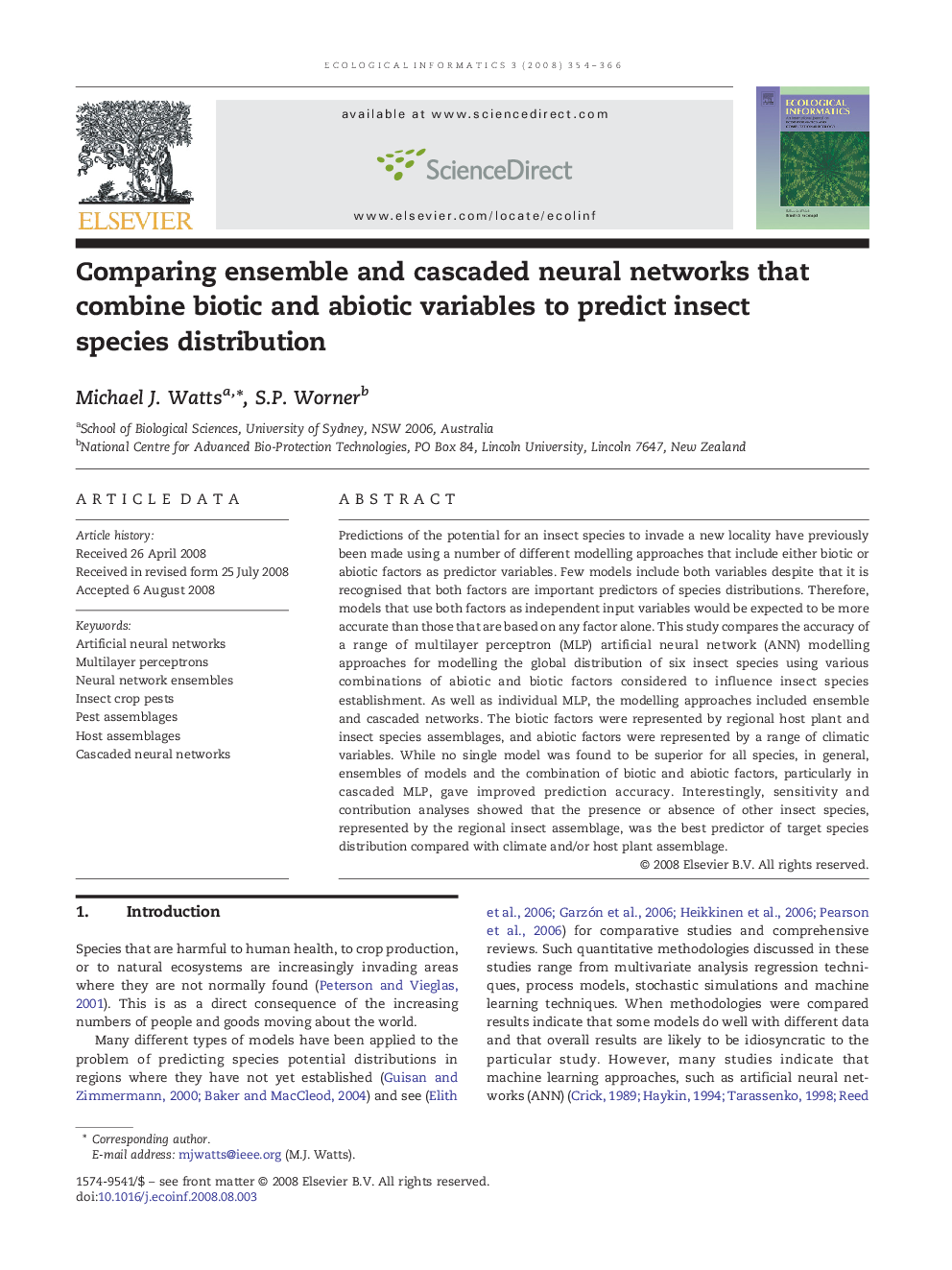| Article ID | Journal | Published Year | Pages | File Type |
|---|---|---|---|---|
| 4375261 | Ecological Informatics | 2008 | 13 Pages |
Predictions of the potential for an insect species to invade a new locality have previously been made using a number of different modelling approaches that include either biotic or abiotic factors as predictor variables. Few models include both variables despite that it is recognised that both factors are important predictors of species distributions. Therefore, models that use both factors as independent input variables would be expected to be more accurate than those that are based on any factor alone. This study compares the accuracy of a range of multilayer perceptron (MLP) artificial neural network (ANN) modelling approaches for modelling the global distribution of six insect species using various combinations of abiotic and biotic factors considered to influence insect species establishment. As well as individual MLP, the modelling approaches included ensemble and cascaded networks. The biotic factors were represented by regional host plant and insect species assemblages, and abiotic factors were represented by a range of climatic variables. While no single model was found to be superior for all species, in general, ensembles of models and the combination of biotic and abiotic factors, particularly in cascaded MLP, gave improved prediction accuracy. Interestingly, sensitivity and contribution analyses showed that the presence or absence of other insect species, represented by the regional insect assemblage, was the best predictor of target species distribution compared with climate and/or host plant assemblage.
